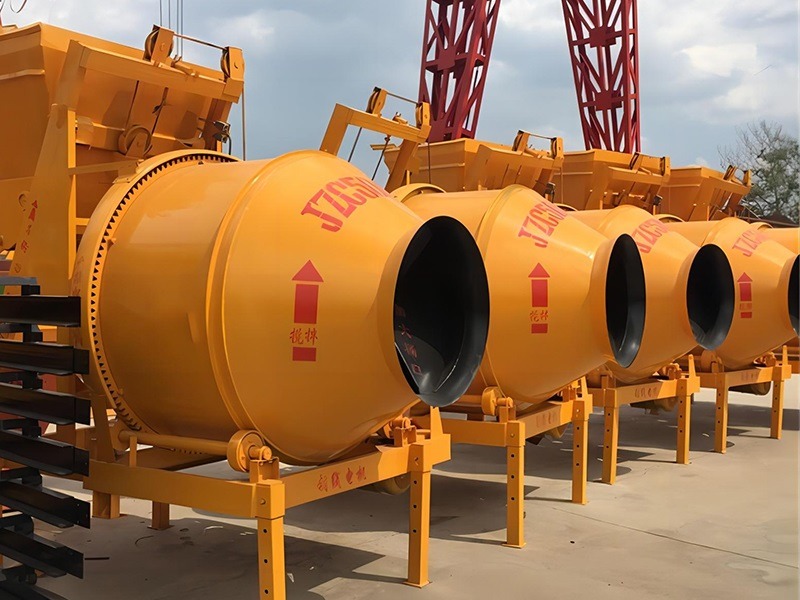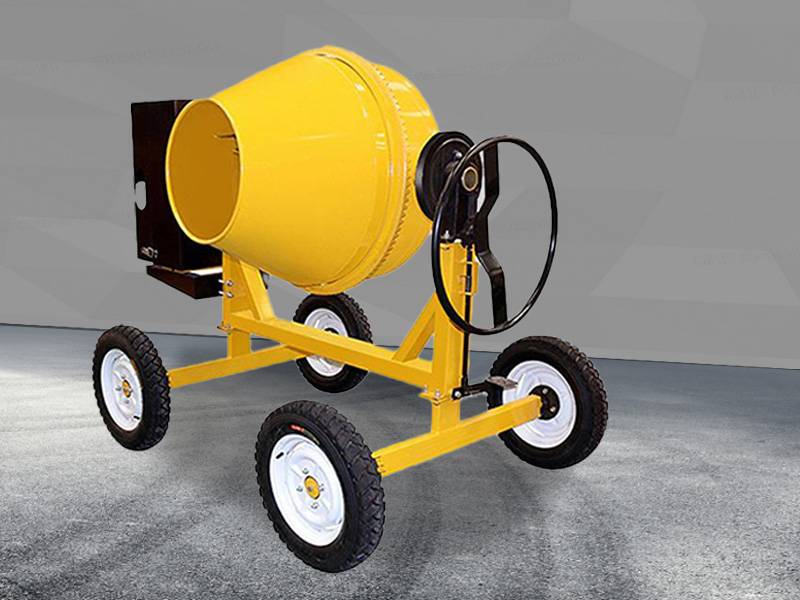Small Concrete Mixer or Big Concrete Mixer? Choosing the Right Concrete Mixer for Your Needs!
When choosing between a small concrete mixer and a large concrete mixer, multiple factors need to be considered, including project volume and construction period requirements, concrete types, concrete composition characteristics and consistency, usage scenarios, and production efficiency. The following is a detailed analysis of these factors:
1. Project volume and construction period requirements
Small concrete mixer: Suitable for scenes with small concrete projects and short construction periods, such as small construction sites, home decoration or rural roads and other small projects. Its mixing volume is generally between 0.25 and 1.5 cubic meters, with the advantages of simple operation, easy movement, and low investment. However, the mixing efficiency is low and cannot meet the needs of large-scale production.
Large concrete mixer: Suitable for scenes with large concrete projects and long construction periods, such as high-rise buildings, bridges and other large construction projects. It has a larger mixing volume, can mix more concrete at one time, and has higher production efficiency. But correspondingly, its investment and operating costs are also higher.



2. Concrete types
Small concrete mixer: Mostly suitable for mixing plastic or semi-plastic concrete.
Large concrete mixer: It is more suitable for mixing high-strength, dry hard or lightweight concrete, which usually requires stronger mixing capacity and higher mixing efficiency.
3. Composition characteristics and consistency of concrete
Small concrete mixer: It is suitable for mixing concrete with small consistency and large aggregate size, or concrete with large consistency and small aggregate size but small mixing volume.
Large concrete mixer: It is more suitable for mixing concrete with large consistency and large aggregate size, or concrete that needs to be mixed in large quantities. When choosing, factors such as the mixing drum speed of the mixer, the shape and number of mixing blades should also be considered to ensure the mixing effect.
4. Usage scenario
Small concrete mixer: Due to its portability and flexibility, it is more suitable for use in small spaces or complex environments.
Large concrete mixer: It is more suitable for open construction sites and can continuously and efficiently supply large amounts of concrete.
5. Production efficiency
Small concrete mixer: The production efficiency is relatively low and it is suitable for small-scale production.
Large concrete mixer: It has high production efficiency and can significantly improve the construction progress and reduce manpower and time costs.
6. Purchase Budget
In the case of insufficient budget:
Clarify the needs, evaluate the scale, duration and concrete demand of the project, and ensure that the selected mixer can meet the basic needs. Consider whether it is necessary to mix multiple types of concrete, as well as the consistency and aggregate size of the concrete.
Investigate the prices of different brands and models of concrete mixers in the market, including small and large mixers. Note that the price includes not only the cost of the mixer itself, but also the transportation, installation, maintenance and possible upgrade costs.
Consider the mixing capacity, mixing quality, durability and ease of use of the mixer.
If the budget is very tight, you can consider buying a second-hand concrete mixer. Second-hand equipment is usually cheaper, but may require more maintenance and inspection.
Even in the case of limited budget, you should choose reliable brands and manufacturers, which usually provide better after-sales service and longer equipment life.
In the case of sufficient budget:
According to production needs, choose a mixer with a larger mixing capacity to meet a larger concrete production volume.
Choose a mixer with higher mixing efficiency, such as a forced mixer, which usually has a better mixing capacity than a self-falling mixer.
Make sure the selected mixer performs well in mixing quality, stability and durability to meet long-term production needs.
In summary, when choosing a small or large concrete mixer, the above factors should be considered comprehensively according to specific needs and project scale. If a large amount of concrete needs to be processed and the construction period is tight, a large mixer is a better choice; if the project is small and the mixing efficiency is not high, a small mixer is more economical and practical.











